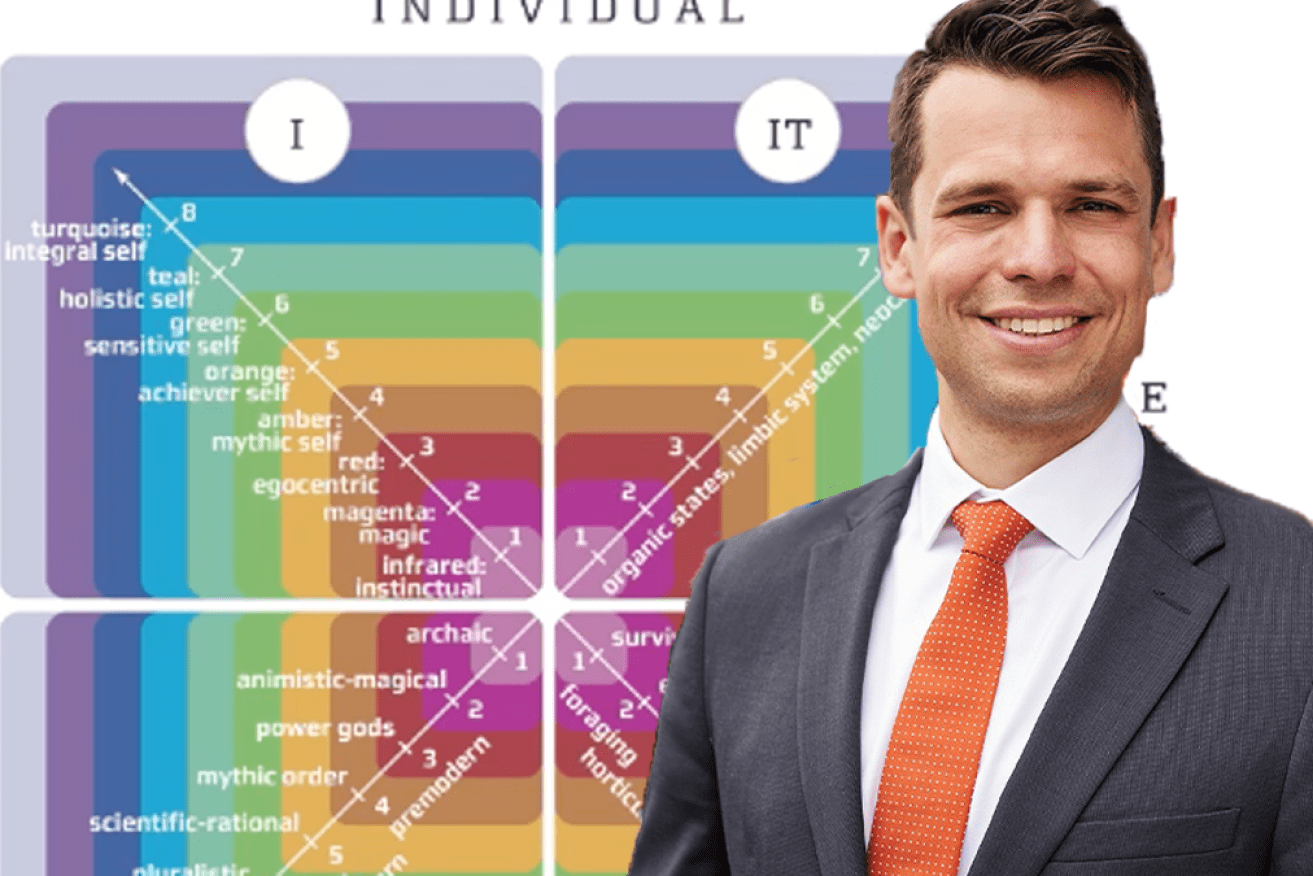The Stats Guy: How to view the world from multiple perspectives


There's a simple way to make sure we're looking at the world from as many perspectives as possible. Photo" TND
I wholeheartedly believe you are a better worker, partner, parent, or citizen when you view the world from multiple perspectives.
The more perspectives the better. The number of perspectives you can view any issue from is limitless.
Today we will look at an easy hack to not overlook any of the four major perspectives you might be able to take on an issue: US American philosopher Ken Wilber’s Four Quadrant Model.
Take a piece of paper and draw two intersecting lines and four words.
The horizontal axis describes a spectrum from interior to exterior (from the inside to the outside). The vertical axis describes a spectrum from individual to collective.

Source: Ken Wilber
You now created four quadrants. We have two individual quadrants, two collective quadrants, two interior quadrants, and two exterior quadrants. We can assign each quadrant a pronoun (don’t worry not thaaat type of pronoun) to describe its perspective in the shortest possible way.
Every issue that you might wish to explore can be viewed from each of these four perspectives. It’s really a mind-blowing experience. Let’s first quickly discuss the four main perspectives.
The Interior Individual Quadrant (I): Worldview, values, purpose
This quadrant focuses on the inner, subjective experiences of individuals. It describes your consciousness. This is the world from your individual worldview, coloured by your values, experienced through your emotions, directed by your life purpose, interpreted though the knowledge you accumulated.
The “I” quadrant dives into the psychological and spiritual aspects of human existence. It explores your individual psychological, emotional development.
Researchers are increasingly becoming aware of this perspective and acknowledge that their own perception of reality might distort their seemingly purely scientific findings. Your experience of the world is unique to you, and you are the main character.
The Exterior Individual Quadrant (IT): Habits, skills, health
The exterior individual quadrant deals with the objective, observable aspects of an individual. This includes your physical body (your height, weight etc. can be measured), your behaviours (can be described), and actions. It is concerned with the tangible, measurable aspects of a person. Neuroscience for example tries to measure your experience by measuring your brain waves. Such data however doesn’t do justice of your experience (“I” quadrant).
This is a measurement of you rather than your experience of yourself. The quantifiable-self movement (books like The 4-hour Body are examples) views the world through this scientific lens and tries to improve you from a physical, measurable perspective.
Science in its purest form operates largely from the “IT” quadrant.
The Interior Collective Quadrant (WE): Shared values, shared purpose, social norms, history
This quadrant explores the shared, subjective experiences that arise within groups, cultures, and societies. It includes shared values, worldviews, and cultural norms in a group (couple, family, organisation, city, country etc.). The “WE” quadrant is the collective version of the “I” quadrant. This is what the world feels like from a cultural perspective. Your religion, your country of origin, your sporting team of choice all shape to some degree how your group perceives a certain situation. Viewing global trade flows from an Australian perspective comes up with different view than when viewed from a Chinese perspective. Both perspectives are correct but potentially different.
The Exterior Collective Quadrant (ITS)
The exterior collective quadrant deals with the observable, external aspects of collective entities. It encompasses social structures, institutions, and systems, such as governments, economies, and technologies. It examines how societies and systems are organised and function. Systems theory is the scientific discipline describing this worldview. Processes, structures, agreements (Geneva Convention etc.) would describe the “ITS” quadrant.
Each of the four quadrants has a valid perspective to offer. The subjective emotional pain of a person who suffers a tragedy is one perspective; the social statistics about such tragedies are different perspectives on the same matter.
A complete understanding of any phenomenon requires considering all four quadrants to capture both the subjective and objective dimensions of reality, as well as the individual and collective aspects of human experience.
Each quadrant’s perspective by itself offers only a partial view of reality. True but partial. In the West we tend to emphasise the exterior or objective perspective. Such perspectives value the externally measurable and testable reality while marginalising subjective experiences as unproven or having no meaning.
Let’s have a look at the issue of homelessness through the four quadrants to see the four quadrants in action.
Interior Individual (I):
What is the inner, subjective experience of an individual homeless person? What are their thoughts, emotions, and personal struggles? They might tell us of experiencing feelings of despair, isolation, and loss of self-esteem.
Without them giving us an honest interpretation of their inner perspective we have no clue. This quadrant addresses the psychological and emotional toll of homelessness, including mental health issues that can arise from living on the streets.
Exterior Individual (IT):
In this quadrant, the objective, observable aspects of homelessness are examined. It includes the physical conditions of homelessness, such as lack of shelter, sanitation, and access to healthcare. We can collect data about the case history. What external factors contributed to homelessness? We measure financial data, check for facts such divorce, trauma, and violence. This is also when we count homeless people to have decent data to analyse.
Interior Collective (WE):
The interior collective quadrant deals with the shared, subjective experiences and perspectives related to homelessness within society. This includes societal attitudes, prejudices, and empathy towards homeless individuals. Stigmatisation and social exclusion are significant issues in this quadrant. It also addresses the collective values and policies that shape how society responds to homelessness, reflecting the cultural and moral traits of a region. Homelessness will look different through the cultural lens in the US, Iran, or India.
Exterior Collective (ITS):
In this quadrant, the objective, external factors related to homelessness are analysed. It encompasses structural and systemic issues, including economic factors, housing policies, and the availability of social services. Factors such as rising housing costs, income inequality, and gaps in the healthcare system can contribute to homelessness. This quadrant also addresses government policies, housing markets, and the role of non-profit organisations in addressing homelessness.
Is any quadrant more important, truer than other quadrants? Can we afford to miss out on one of the four quadrants when tackling the issue?
By examining homelessness through all four quadrants, a more comprehensive understanding of the issue emerges. Things tend to become more complex when viewed from multiple perspectives.
We now recognise that solving homelessness requires not only addressing the visible symptoms (exterior individual) but also considering the psychological well-being (interior individual), societal attitudes (interior collective), and systemic factors (exterior collective) that contribute to and perpetuate the problem.
Effective solutions to homelessness usually reach across all quadrants.
If you want to play along at home you can try to view other complex issues through the four quadrants. Try the Voice, housing affordability, or obesity for starters.
After a while you will see that your clients, boss, or family members favour certain quadrants. This knowledge is incredibly helpful in communicating with them.
You will work with people who completely ignore or actively dismiss one quadrant while fetishising another. Their views of reality aren’t wrong, but they are very limited. Self-help gurus tend to focus on the “I” quadrant.
This is personal empowerment at its best. If you really work hard, you can achieve anything you set your mind too. Cool. Social activists on the other hand unintentionally take power away from individuals. It’s all the systems fault. The system works against you. Both perspectives are correct – to an extent.
Where learn about Ken Wilber’s quadrants?
A Brief History of Everything by Ken Wilber is one of his more accessible works. My favourite book that is at least informed by the same intellectual framework is Reinventing Organizations by Frederic Laloux.
The book simply tells a few case studies of organisations that operate differently. Sound dry and boring as hell but it’s one of the best books I have read in my whole life as it shifted my perspective of what work can look like.
I hope you found today’s discourse into theory interesting. If not, don’t worry about it as we will dive back into big demographic datasets next week.
Demographer Simon Kuestenmacher is a co-founder of The Demographics Group. His columns, media commentary and public speaking focus on current socio-demographic trends and how these impact Australia. Follow Simon on Twitter, Facebook, LinkedIn for daily data insights in short format.








